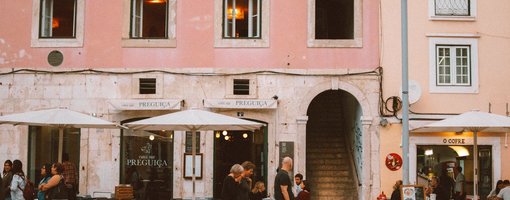One of the city's oldest neighbourhoods is Kypseli, located in the heart of Athens. Before the turn of the 20th century, Kypseli was a rural area with a few estates and country houses (the home of Greek Revolution hero Konstantinos Kanaris). Engineer Athanasios Georgiadis planned and bounded it in 1908. The construction of family homes and the first contemporary apartment complexes in the 1930s marked the beginning of the urban transition. Neoclassical architecture was used to build the older homes, but after the 1930s, global trends including modernism, art deco, and the Bauhaus had an impact on the construction of the contemporary homes and apartment complexes. Kypseli was primarily home to middle-class and upper-middle-class households in the 1960s, but at the same had a vibrant nightlife with theatres, night clubs and restaurants, especially around Fokionos Negri Street.

The majority of the families relocated to the city's northern suburbs when the area's appeal started to decline in the 1990s. Immigrants from Africa and other nations started to rent and occupy homes and apartments in the neighbourhood at this time due to a decline in housing values and rents. Kypseli has a rich artistic history because it was home to several performers, writers, musicians, artists, and thinkers for many years. During that time, Kypseli was home to numerous renowned theatres, making it a popular haunt for performers and actresses in the industry.

Municipal Market
Kypseli has been reclaiming its identity during the past ten years. Greek families are relocating here, and immigrant families now regard themselves as locals after all these years. Along with new cafes, restaurants, and bars, many historic shops that have been here for many generations open, revitalising Kypseli's nightlife. Kypseli is now a mingling pot of several ethnicities and civilizations. It's an urban area that marks the beginning of Athens' transition into a modern metropolis. This is a place where the spirit of a changing city is captured and made into a way of life.The new jazz bar, the old tavern, the Pakistani barbershop and the African hair parlour could co-exist side by side in the same street.

Fokionos Negri
You can be persuaded of Kypseli's distinct character by taking a quick stroll through the city's centre. Commence your journey north at Konstantinos Kanaris Square, where the statue of the Greek hero is located. Proceed along pedestrian Fokionos Negri Street, and you will come upon the Kypseli Municipal Market building at number 42. 1935 saw the construction of a food market that is now a local historical site. The Municipality of Athens has refurbished the building, which serves as a community centre for events and small companies. A flower shop, an art gallery, a bar serving fresh juice, a used goods store, and a few more businesses may be found in the market.

St George's Square
Continue your walk at Fokionos Negri Street and you will come across many cafes, restaurants, shops and some fine examples of urban architecture. Turn left onto Drosopoulou Street after leaving Fokionos Negri. In earlier years, Drosopoulou served as the neighborhood's primary business street; however, these days, only few stores still stand. Some of Athens' most significant and unadulterated examples of interwar architecture can be found along this street. Turn left at Ithakis Street from Drosopoulou Street to arrive to the new hub of Kypseli, the picturesque St George's Square, with its iconic brass lamppost at its centre. This lamppost, which depicts three miniature love gods, was installed in the first decade of the 1900s and is modelled after the lampposts of Paris's Pont Alexandre III. Around the square, which has become extremely popular in the last years, you could find excellent choices for food, coffee and drink.

Drosopoulou Street
Lastly, make your way over to Patision Avenue, one of the city's major thoroughfares. For many years, the section of Patision Avenue that runs along Kypseli was home to several of the city's most renowned movie theatres and was also one of the busiest commercial areas in Athens. Following a decline in the previous ten years, Patision, together with Kypseli, is reclaiming its role in the city's daily life.

Patision Avenue
Kypseli is a place to experience the true spirit of the city rather than a tourist destination. A visit to Kypseli will mark the start of a new chapter in the city's history. a fusion of cultures and civilizations that is accepting of all differences










